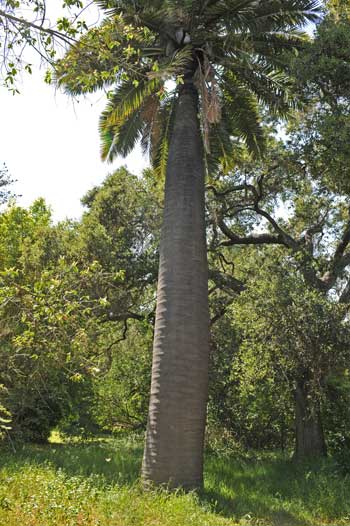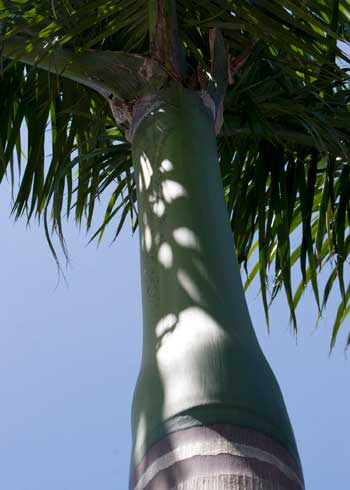Palm tree types
There are many different palm trees growing all around the world. Of all the palm tree types, around 3000 palm species are known. Palm tree species belong to Arecaceae family, and the figure of palm varieties known to science is constantly growing, as new species get discovered.
The sheer number of palm trees, as well as slight differences between many different palm trees, make identification of some varieties difficult even for experts. However, most palm trees can be identified by their distinct features, and this is in fact how The Palm Identifier works.
Another feature worth considering would be geographic location or palm tree habitat. Some palm tree species grow only in certain places in the world, may prefer shade or full sun, as well as humid or dry climate. Based on the combination of these features, a large number of palm tree types are suitable for indoor growing.
Palm trees have been considered a symbol of victory since the roman ages, while today they are mostly a symbol of the tropics and sandy beaches in the form of the coconut palm. Various palm tree types are among the most cultivated trees in the world, and play a considerable role in our lives. The Date Palm (Phoenix dactylifera), for instance, has historically been the most cultivated palm tree, and still is today.
Palm tree types and leaf shape
Palm trees can be differentiated by the general shape of their leaves. The best known and most common palm tree leaf shapes are pinnate and palmate:
Pinnate palm leaves are also known as feather palm leaves, as they resemble a feather, with two rows of leaflets generally on each side of the stem

Pinnate palm leaf shape
Also known as feather leaf shape
Palmate palm leaves are also called fan palm leaves, where leaflets radiate from the base of the leaf. Cold hardy palms are known to generally have palmate leaves.

Palmate palm leaf shape
Also known as fan leaf shape
In the palm tree species world, there are many bigger or smaller variations regarding the palm leaf shape. This is why we also recognize several other distinctive shapes, such as costapalmate, bipinnate, simple, bifid, or in some instances a completely irregular leaf shape. These can vary even on the same palm plant.
Differentiating palm trees by trunk shapes and features
Palm tree trunks can be helpful when differentiating most palm tree varieties. They are easy to tell apart, and we can say that there are three palm tree trunk types, based on their form and how they grow:
- Solitary trunk, a typical and well known palm tree type with a single trunk. In some palm tree species, the trunk can sometimes split, or branch, as the palm grows.
- Clustered trunk, where a palm tree grows in a dense cluster of thinner single trunks
- No trunk, where palm leaves seemingly grow directly from the ground. We can also say that such palm trees mostly have an underground, or a very short trunk.
A problem with palm identification by palm trunk may occur with some species, which can sometimes grow in the form of all three trunk types.
For instance, some plants may grow as a clustered palm in one occasion, or as a solitary plant in other.
Palm trunk specifics
Trunks can differ based on several different features.
Some palm trees have smooth trunks, with barely any sign of old leaves, while other palm trees have trunks covered in old leaf scars, interwoven fibers, scales, or even spines.
Palm tree trunks are mostly thin, but can be extremely thick, which reflects on the overall mass of the plant.
Palm height is generally not linked to trunk width. Very tall palm trees do not necessarily have a thick trunk.
Crownshaft
Another distinguishing feature of some palm tree species is the crownshaft.
The crownshaft can be described as a form on top of the palm tree trunk, just beneath the leaves, serving as their basis.
While many palm species have no crownshaft, or it is not very significant, some species are well known, as well as easily identified, because of it.
The Roystonea regia, or Royal palm, is a good example and is known for its well developed crownshaft, as can be seen in the picture on the right.
Palm tree size
Palm tree size can be helpful when trying to identify a clearly mature plant, or one that has reached its expected height and mass. Some palm tree species can reach a height of more than 60 meters, or 200 feet, as is the case of Quindio wax palm.
Of the taller palm species, Washingtonia robusta, or Mexican Fan Palm is perhaps the most known.
Topping at around 30 meters or 100 feet, Washingtonia is known to many from movies and action series shot in California, where the tall and slender palm makes an integral part of LA scenery.

Jubaea chilensis
Chilean Wine Palm
Author: Dan Lindsay, Source
The overall mass of very tall palm trees can however differ from some shorter palm varieties, which may be bulkier, with thicker trunk and denser foliage. An example of massive palm trees would definitely be the Chilean Wine Palm, or Jubaea chilensis. This cold hardy and slow growing palm tree is known to reach a trunk width of more than 4 feet, or almost 1.5 meters. It is now a protected palm species, as it was historically harvested for the sugary sap contained in its trunk. A mature Jubaea trunk can hold more than 100 gallons of sap, which could then be boiled down to make palm honey, or fermented to make liquor (hence the name).
The clear distinction between mass and height of a palm tree is important when trying to identify a palm plant with the aid of a system such as The Palm Identifier.
It is also good to remember that the size of a palm tree should not be considered as indicative for container-grown palms, as their growth is most likely inhibited by the container itself.
It is natural that smaller palm trees tend to be more suitable for growing in a container. This is not only because of their size, but because it is more likely that smaller palm species adapt better to low light conditions due to their growing habitat, which resembles a common indoor environment.
The tallest palm tree
Ceroxylon quindiuense, or Quindio wax palm, is known to be the tallest palm tree in the world. The palm is native to high altitude Andes in Colombia, where it was almost driven to extinction due to it being harvested for wax used to make candles. This was before electricity was introduced, and since 1985 it is a legally protected species. This palm is also recognized as the national tree of Colombia. Due to its beauty and moderate hardiness, it is grown as an ornamental plant in many parts of the world.


